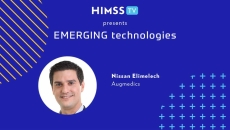Technology
Anne Osdoit, CEO of Moon Surgical, discusses the company’s Maestro surgical robotics system and how it supports surgeons during soft tissue procedures.
Anne Osdoit, CEO of Moon Surgical, says the company’s robotic surgery offering serves as a surgical assistant in laparoscopic soft tissue procedures, using robotic arms to hold instruments and AI to give insights into workflow efficiency.
The partnership will allow Oura Ring wearers to share their biometric data with the virtual women's health company's care teams.
HIMSS25
From documenting bedside prayers to helping a hard-of-hearing nurse connect with patients, AI tools are revealing the importance of nurses' and patients' emotional and spiritual bonds to healing, says Mercy's Tracy Breece.
Lyrebird Health plans to scale its operation internationally, beginning in the United Kingdom.
The company's valuation has increased by $1 billion since its $130 million Series E funding round last year.
HIMSS25
According to Tony DiGiorgio, chief architect at Symplr, the company has carefully embedded AI into its operational platform to cut administrative redundancy and enable nurses to minimize the number of systems they use each day.
Intermountain Health plans to deploy Layer Health's AI platform across its network, which includes 33 hospitals in multiple states.
Researchers identified common and unique characteristics of the tumor microenvironment and developed an integrated analysis structure that other researchers could utilize.
Nissan Elimelech, founder of Augmedics, shares how the company's augmented reality surgical technology projects an anatomically accurate 3D spine onto the patient, helping surgeons operate with their eyes on the body instead of a screen.








